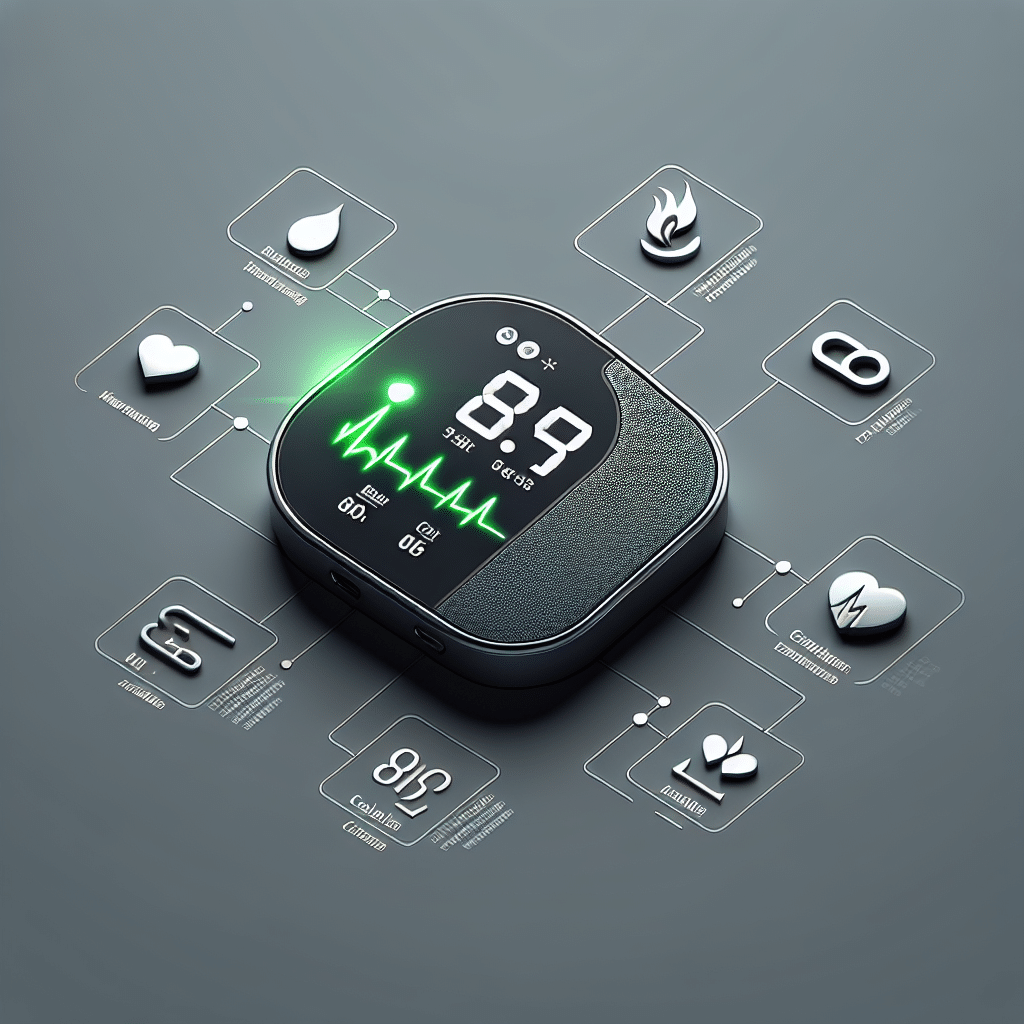Understanding Heart Monitors with Calorie Tracking
Heart monitors equipped with calorie tracking offer a distinct advantage for fitness enthusiasts and health-conscious individuals. These devices empower users to maintain optimal heart health while effectively managing their calorie intake and expenditure.
What Is a Heart Monitor?
A heart monitor is a device that measures and records heart rate data in real-time. They come in various forms, including chest straps, wristbands, and smartwatches. Heart monitors are crucial for various exercise regimens, helping individuals stay within targeted heart rate zones for maximum effectiveness during workouts.
The Science Behind Heart Rate Tracking
Heart rate monitoring calculates the number of times your heart beats per minute (BPM). This data is vital; understanding your heart rate allows you to gauge your cardiovascular fitness level.
- Resting Heart Rate (RHR): Indicates fitness level; a lower RHR generally signifies better cardiovascular health.
- Maximum Heart Rate (MHR): The highest heart rate achievable during intense physical activity, typically estimated by subtracting your age from 220.
- Target Heart Rate (THR): A specific heart rate range during exercise that optimizes calorie burning and fitness gains.
The Role of Calorie Tracking
Calorie tracking relates directly to the number of calories burned during physical activity. Integrating calorie metrics with heart rate data provides a comprehensive overview of your workout’s efficiency.
- Caloric Expenditure: The number of calories your body burns during exercise, influenced by factors such as activity type, intensity, duration, and individual metabolic rate.
- Importance of Accuracy: Ensuring precise calorie tracking can significantly affect weight-loss plans or performance goals.
Benefits of Combining Heart Monitors with Calorie Tracking
-
Enhanced Fitness Insights: By monitoring both heart rate and calorie expenditure, users can better understand their body’s performance.
-
Personalized Workouts: Adjustable heart rate zones allow you to tailor workouts to different fitness levels, maximizing the efficacy of every session.
-
Improved Goal Achievement: Individuals pursuing weight loss can benefit from the real-time feedback these devices offer, helping maintain motivation and accountability.
-
Real-Time Data Monitoring: Users can instantly adjust their workouts based on immediate data collected, ensuring they remain within the desired heart rate zone for optimal calorie burning.
-
Long-Term Progress Tracking: Most devices store historical data, offering insights into trends in fitness levels and body composition changes over time.
Types of Heart Monitors with Calorie Tracking
-
Chest Strap Monitors: Known for their accuracy, chest straps use electrodes to detect electrical impulses from the heart. They are particularly beneficial for high-intensity workouts.
-
Wrist-Based Monitors: Popular for everyday use, wrist-based devices utilize optical sensors to measure heart rate. They are convenient for casual users but may be less accurate during intense activity.
-
Smartwatches: Combining multiple features, smartwatches provide extensive health tracking capabilities beyond heart rate and calories, including sleep monitoring and activity tracking.
Key Features to Look for in a Heart Monitor
-
Heart Rate Accuracy: The device should provide consistent and accurate readings, crucial for effective workouts.
-
Calorie Calculation Methodology: Look for devices that factor in personal metrics like age, weight, and fitness level for more precise calorie tracking.
-
Connectivity: Ensure your heart monitor can synchronize with smartphones or other fitness apps for enhanced tracking capabilities.
-
User-Friendly Interface: An intuitive display or app experience is essential for quick data access during workouts.
-
Battery Life: Long-lasting battery life is crucial, especially for those who engage in extended training sessions or multi-day events.
How to Use a Heart Monitor Effectively
-
Start with Calibration: Input personal data accurately to ensure precise calculations for heart rate and calorie expenditure.
-
Understand Heart Rate Zones: Familiarize yourself with varying heart rate zones—warm-up, fat burn, cardio, and peak—to optimize workouts.
-
Track Consistently: Regularly use the monitor during workouts to identify patterns in heart rate response to different activities and intensities.
-
Combine with Other Metrics: Utilize additional health metrics the device offers, such as sleep quality and recovery time, to inform overall wellness strategies.
-
Set Specific Goals: Whether aiming for weight loss or performance enhancement, clear goals can guide how you utilize heart rate and calorie tracking data.
Popular Heart Monitors with Calorie Tracking Features
-
Polar H10: Renowned for its accuracy, the Polar H10 chest strap monitor provides heart rate data and calorie expenditure insights, catering to both serious athletes and casual gym-goers.
-
Garmin Forerunner Series: These smartwatches not only track heart rate and calories but feature GPS capabilities, making them ideal for runners who need distance tracking.
-
Apple Watch Series: Known for its extensive health monitoring features, the Apple Watch integrates heart rate and calorie tracking with other lifestyle apps, appealing to tech-savvy users.
-
Fitbit Charge Series: Focusing on holistic health, Fitbit’s devices provide detailed insights into heart rate, calories burned, and overall activity level, promoting daily movement.
-
Wahoo TICKR: This versatile chest strap offers real-time heart rate and calorie tracking, compatible with numerous fitness apps and devices.
Maintaining Accuracy in Heart Rate Monitoring
To ensure reliable data, regularly update your device firmware, ensure proper fit during workouts, and consider environmental factors such as temperature, which may affect heart rate readings. Awareness of these elements can enhance your caloric tracking experience, providing more meaningful insights.
Conclusion on Heart Monitors with Calorie Tracking
Heart monitors with calorie tracking capabilities significantly enhance your ability to maintain a healthy lifestyle and achieve fitness goals. By offering real-time heart rate monitoring and precise caloric expenditure data, these devices play a pivotal role in creating effective workouts. With various user-friendly designs and features available, selecting the right heart monitor can be the key to unlocking your fitness potential. By understanding and utilizing the data provided, individuals can embark on a journey toward improved health and wellness.
